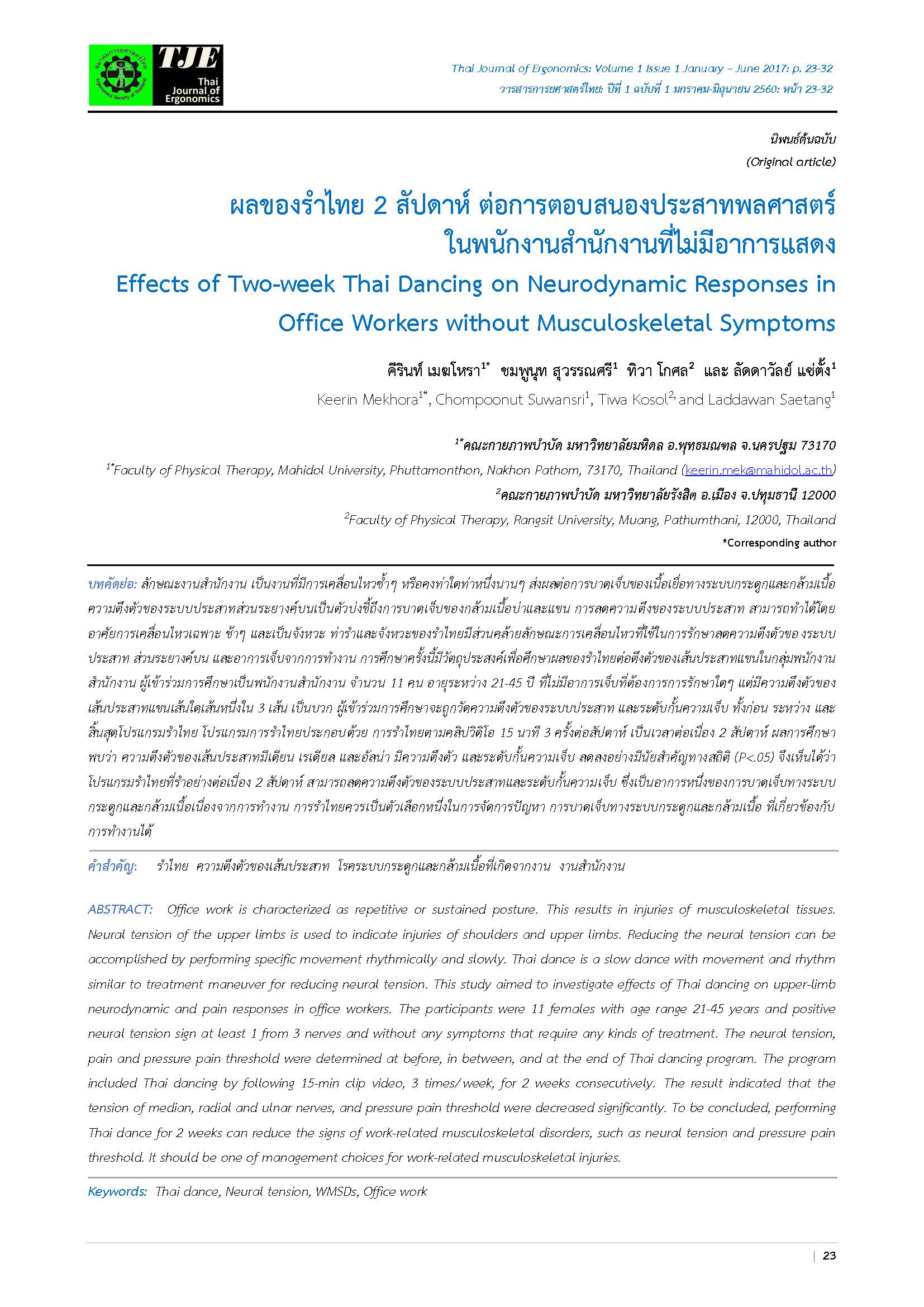Effects of Two week Thai Dancing on Neurodynamic Responses in Office Workers without Musculoskeletal Symptoms
Main Article Content
Abstract
Office work is characterized as repetitive or sustained posture. This results in injuries of musculoskeletal tissues. Neural tension of the upper limbs is used to indicate injuries of shoulders and upper limbs. Reducing the neural tension can be accomplished by performing specific movement rhythmically and slowly. Thai dance is a slow dance with movement and rhythm similar to treatment maneuver for reducing neural tension. This study aimed to investigate effects of Thai dancing on upper limb neurodynamic and pain responses in office workers. The participants were 11 females with age range 21 45 years and positive neural tension sign at least 1 from 3 nerves and without any symptoms that require any kinds of treatment. The neural tension, pain and pressure pain threshold were determined at before, in between, and at the end of Thai dancing program. The program included Thai dancing by following 15 min clip video, 3 times/week, for 2 weeks consecutively. The result indicated that the tension of median, radial and ulnar nerves, and pressure pain threshold were decreased significantly. To be concluded, performing Thai dance for 2 weeks can reduce the signs of work related musculoskeletal disorders, such as neural tension and pressure pain threshold. It should be one of management choices for work related musculoskeletal injuries.
Article Details

This work is licensed under a Creative Commons Attribution-NonCommercial-NoDerivatives 4.0 International License.
References
van der Heide B, Allison GT, Zusman M. Pain and muscular response. Manual Therapy 2001;6(3): 154 162.
Elvey RL: The investigationof arm pain. In: Grieve G (Ed.) Modern manual therapy of the vertebral column. Churchill Livingstone, London; 1986: 530 535
Byng J, Overuse syndromes of the upper limb and the upper limb tension test: a comparison between patients, asymptomatic keyborad workers and asymptomatic non keyborad workers. Manual Therapy 1997; 2(3)157 164.
Butler DS: Mobilization of the nervous system. Melbourne Australia: Churchill Livingstone, 1991 [5] Mekhora K, Septham C, Jalayondeja W, Effect of Thai Dancing on Median Neurodynamic response During 4 hour Compuster Use. J Med Assoc Thai 2015; 97 Suppl.5:S86 91 [6] Butler DS: The sensitive nervous. Adelaide: NOI group Publications, 2000
Shacklock M: Clinical Neurodynamics: A new system of musculoskeletal treatment. Elsevier Butterworth Heinemann, 2005

